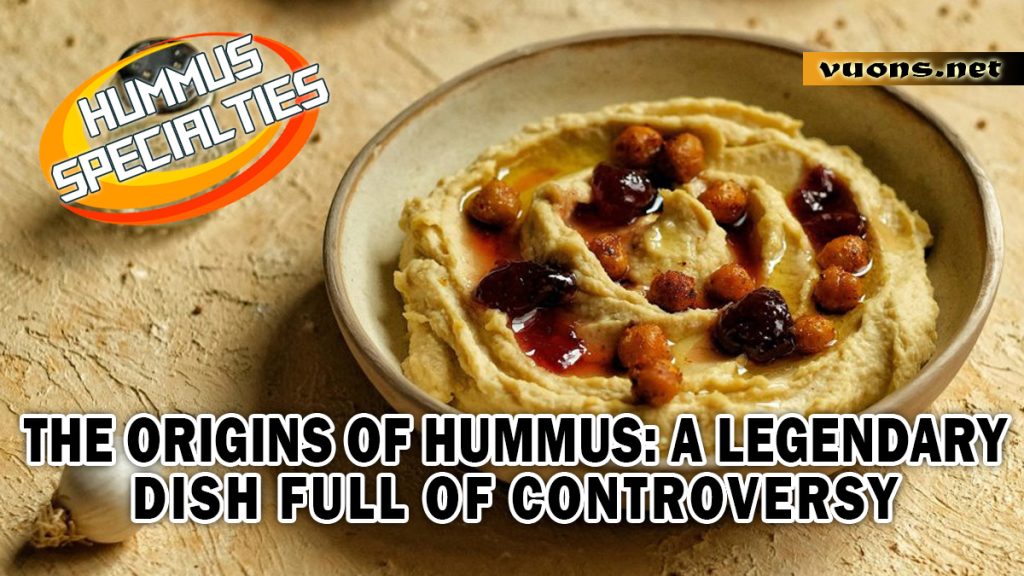The History of Hummus: The Trail of a Legendary Dish
Hummus: A Simple, Global Dish from the Middle East – Hummus is a Middle Eastern dish that has become a global culinary icon. Made from mashed chickpeas mixed with tahini, lemon, garlic, and olive oil, the dish has been enjoyed for centuries. However, the origins of hummus are often debated among the various countries in the region.
The first written record of hummus is thought to date back to 13th-century Egypt. This ancient recipe included basic ingredients similar to modern hummus, although with some variations in seasoning and preparation methods. On the other hand, many believe that the Levant, including the regions of Lebanon, Syria, and Palestine, is the birthplace of the dish.
In addition to being a staple Food, hummus has an important cultural role. In Middle Eastern tradition, hummus is served as part of a mezze, a collection of small dishes enjoyed with family or friends. The popularity of hummus has grown over time, especially in the modern era, when people began to recognize its high nutritional value.
Today, hummus is not just a food, but a symbol of pride for many Middle Eastern countries. Its presence in restaurants and home kitchens around the world shows how this simple dish manages to connect tradition with innovation.
Basic Ingredients That Make Hummus Special
Hummus, a Middle Eastern dish popular around the world, is known for its creamy, rich flavor. The secret to hummus’ deliciousness lies in its simple yet high-quality base ingredients.
The main ingredient in hummus is chickpeas, which are boiled until tender. They provide a creamy texture and are a rich source of plant-based protein. Tahini, a smooth sesame seed paste, is added to give it a distinctive, slightly bitter and rich flavor.
Fresh lemon juice is also an essential ingredient in the hummus recipe. Its acidity provides a refreshing balance between the flavors of the beans and tahini. Minced garlic adds a tangy aroma and flavor that is characteristic of hummus.
Vegetarian oil not only enhances the flavor but also enriches the texture of hummus. It is usually poured over the hummus as a garnish before serving. Salt is used sparingly to bring out the overall flavor.
The combination of these basic ingredients creates a simple, delicious and nutritious dish. In addition, hummus is often garnished with paprika powder, cumin seeds, or parsley to add visual appeal and flavor. Variations of ingredients such as beetroot, avocado, or pumpkin are also now widely used, bringing new innovations without losing its traditional essence.
Hummus Making Process: Simple but Delicious
Hummus, a Middle Eastern dish, is known for its easy process but delicious taste. The key to making hummus is making sure the basic ingredients are quality and processed properly.
The first step is to prepare the chickpeas. These beans are soaked overnight to soften their texture, then boiled until they are completely tender. This process is important for getting a creamy hummus. If using canned chickpeas, the soaking step can be skipped.
Once the beans are ready, other ingredients such as tahini (sesame seed paste), garlic, and fresh lemon juice are mixed together. The use of tahini gives a smooth texture and distinctive flavor, while garlic and lemon add aroma and freshness.
All ingredients are put in a blender or food processor, then pureed until it reaches the desired consistency. During this process, add extra virgin olive oil little by little to help blend and give a smoother texture. Salt is added to taste to perfect the flavor.
After the hummus is finished being prepared, it is usually served with a finishing touch of additional olive oil, paprika powder, or a sprinkle of cumin seeds. This simple hummus-making process allows anyone to create an authentic Middle Eastern dish in their own kitchen.
Traditional Ways to Enjoy Hummus in the Middle East
Hummus is not just a food, but an important part of the culinary tradition in the Middle East. It is usually served as part of a mezze, a collection of small dishes served to be enjoyed with family or friends. In this culture, enjoying hummus is a social experience that is closely tied to togetherness.
The traditional way to serve hummus begins by placing it on a large plate. The chickpea paste is spread with a spoon to form a well in the center, which is then filled with extra virgin olive oil. Some variations add a sprinkling of paprika, cumin seeds, or chopped parsley for additional color and flavor.
Hummus is usually eaten with soft pita bread. This bread is used to scoop the hummus directly from the plate, replacing eating utensils such as spoons or forks. Sometimes, fresh vegetable slices such as cucumber, carrots, or bell peppers are also used as accompaniments to dip the hummus.
In addition to being a dip, hummus is often paired with other dishes such as falafel, kebabs, or even salads such as tabbouleh. This combination creates a rich harmony of flavors, from savory, sour, to slightly spicy.
This tradition is not only about taste, but also about cherishing time together. In a relaxed atmosphere, hummus becomes a symbol of hospitality and sharing, reflecting values respected in Middle Eastern culture.
